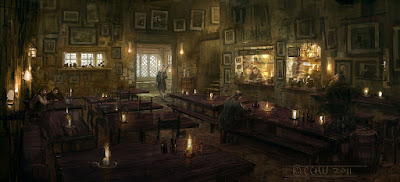Plundering the Treasure Ports
Christopher Columbus’s voyage to the Spanish Main, a region
rich in not only mosquitoes but gold, silver, and precious gems, exceeded
European expectations of the New World. This stretch of the American coast
located around the southern rim of the Caribbean Sea quickly became the focal
source of wealth for Spain, thus a hotbed for piracy and raids.
The potential for wealth was astronomical even by today’s
standards. In just four years “between 1596 and 1600, Spain imported treasures
from the new world worth 34,428,500 pesos… the equivalent of $774 million… in today’s
terms” (Cordingly, David). Pesos, also known as "pieces of eight", were the most widely known currency coming from the New World. Officially known as "eight reales", these silver coins were "valued in England at four shillings and sixpence in 1664...the equivalent of $23 today" (Cordingly, David).
The valuable natural resources were located inland. After
mining the precious metals and stones, they were loaded on to mule trains and
trekked through the luscious but dangerous rainforests towards the fortified
ports the Spaniards built along coast. Once the treasure reached the coast it
was loaded on to ships for armed transport back to Spain.
The astounding wealth exported from the Spanish Main drew
pirates as well as privateers from competing European nations such as England
and France. In principal ports like
Darien and Portobello (located on the Isthmus of Panama) and Cartagena (located
in what in now Venesuela), Spain sent soldiers to man the massive forts and gun
batteries as well as “a fleet of up to thirty armed galleons… accompanied by
armed warships” to protect the treasure on the return voyage (Coordingly,
David).
These measures did not deter serious pirates and privateers like Francis Drake.



Comments
Post a Comment